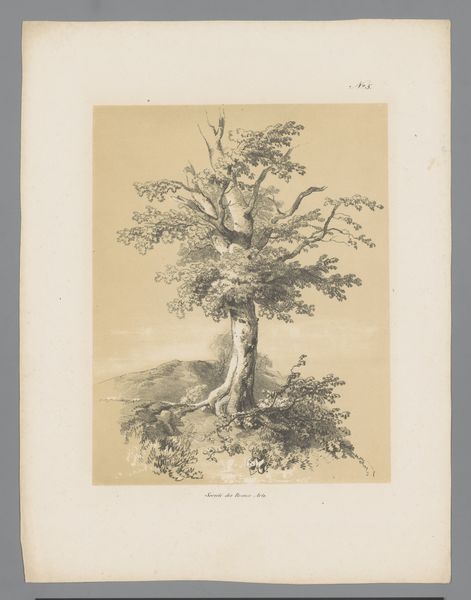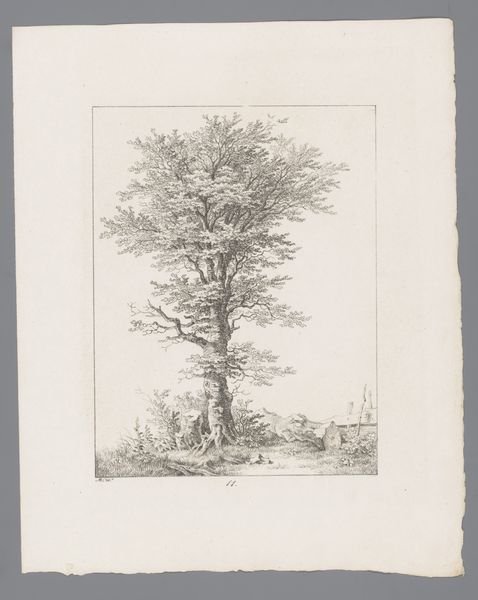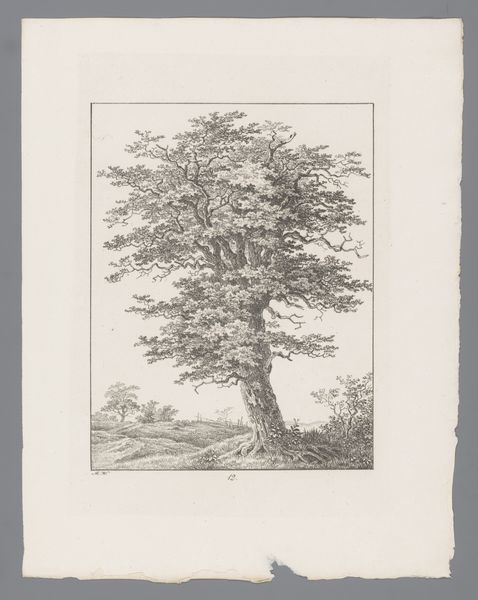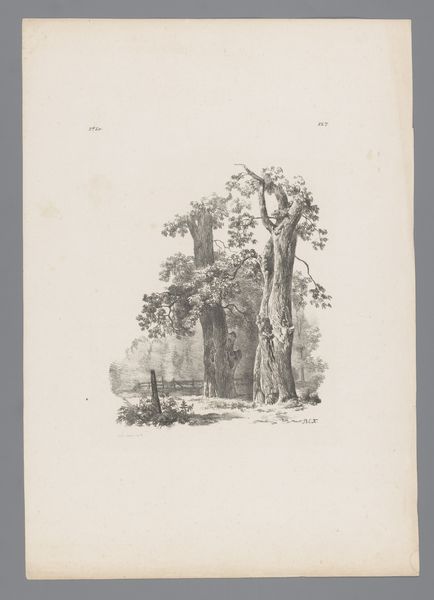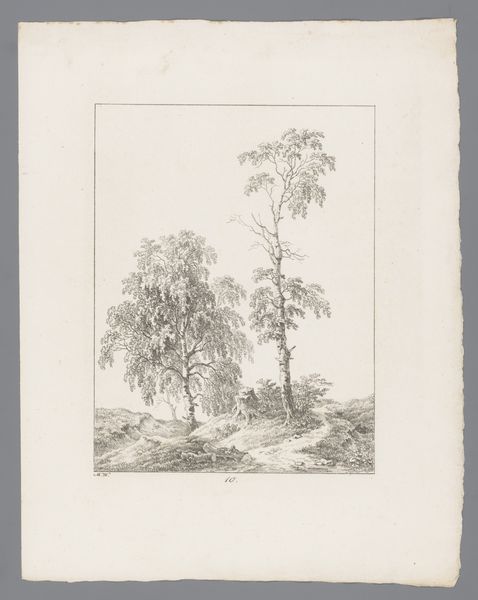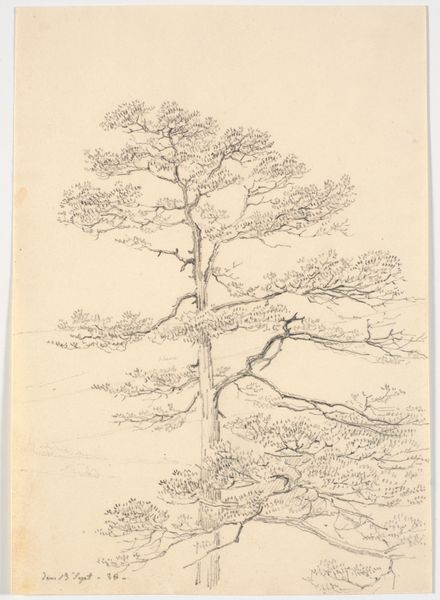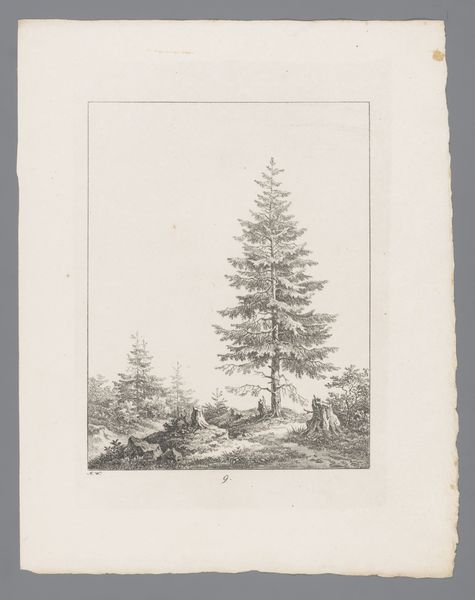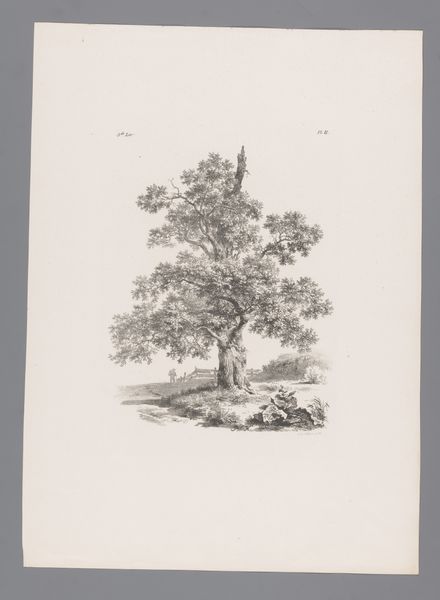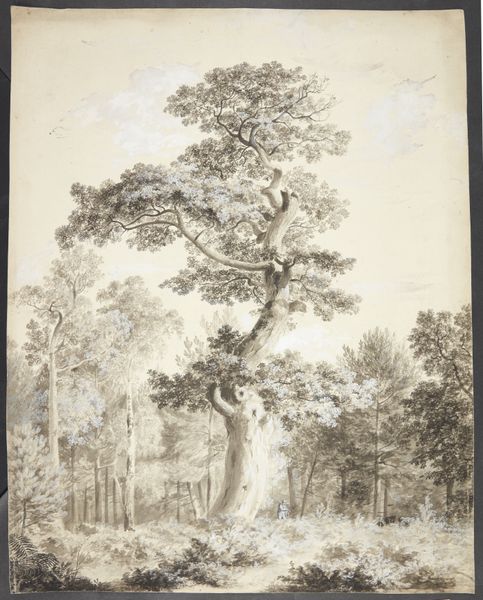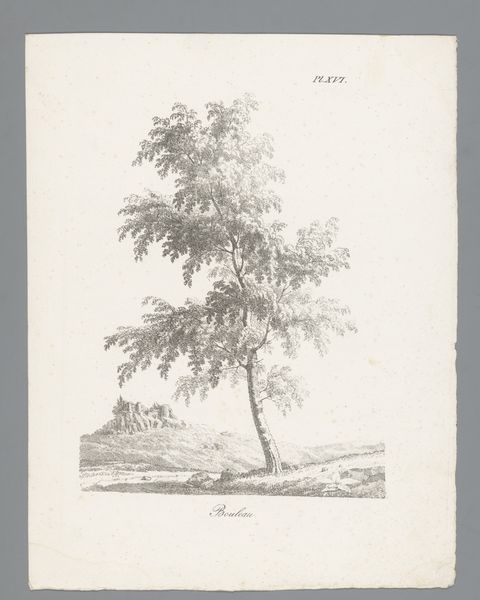
drawing, paper, pencil
#
drawing
#
landscape
#
paper
#
pencil
#
genre-painting
#
realism
Dimensions: height 497 mm, width 348 mm
Copyright: Rijks Museum: Open Domain
Curator: So, here we have Paulus Lauters' 1839 pencil drawing, "Kankantri boom," currently held at the Rijksmuseum. It is meticulously crafted on paper and classified under the landscape genre-painting tradition. Editor: Immediately, I'm struck by how the solitary tree dominates the composition, like some ancient sentinel overlooking the village. There's something both calming and commanding about its presence. Curator: Precisely! In many cultures, trees symbolize life, growth, and interconnectedness. The Kankantri tree, in particular, is indigenous to certain regions, making its depiction here perhaps a symbol of rootedness and belonging within its native environment. We see a realistic style reflecting the artist’s close observations. Editor: I'm curious about those little huts nestled beneath its shadow. They look almost dwarfed, giving the tree this god-like stature. Curator: They’re very important. In genre-paintings they emphasize daily life within a setting. Placing them at the feet of the massive tree amplifies not just the tree's size but also hints at nature's dominion and the dependence of humans upon it. Remember that this piece was produced during the Romantic period in art history which glorified untamed Nature. Editor: Right, a humble acknowledgment. I like how the pencil work renders every leaf, every vine, with this delicate, almost reverential touch. It feels like Lauters wasn’t just drawing a tree but paying homage to it. It looks so careful. I wonder, what was his emotional state, or the purpose, or the function, beyond what meets the eye when he chose to document the details here. It evokes a kind of patient reverence. Curator: An interesting insight. One could propose that rendering of these intricate details may mirror the interconnectedness that many perceived during the Age of Exploration with far away places. His approach reveals respect and awe before nature. He wants you to look closely too. Editor: That’s a powerful interpretation! Now, seeing those intertwined roots clawing into the earth makes me reflect on origins. Where did this village come from, and how will they subsist for generations? Thank you for illuminating that hidden significance. Curator: Thank you, indeed. Artworks like these offer not only aesthetic pleasure but also a deeper understanding of humanity's relationship with the natural world.
Comments
No comments
Be the first to comment and join the conversation on the ultimate creative platform.
